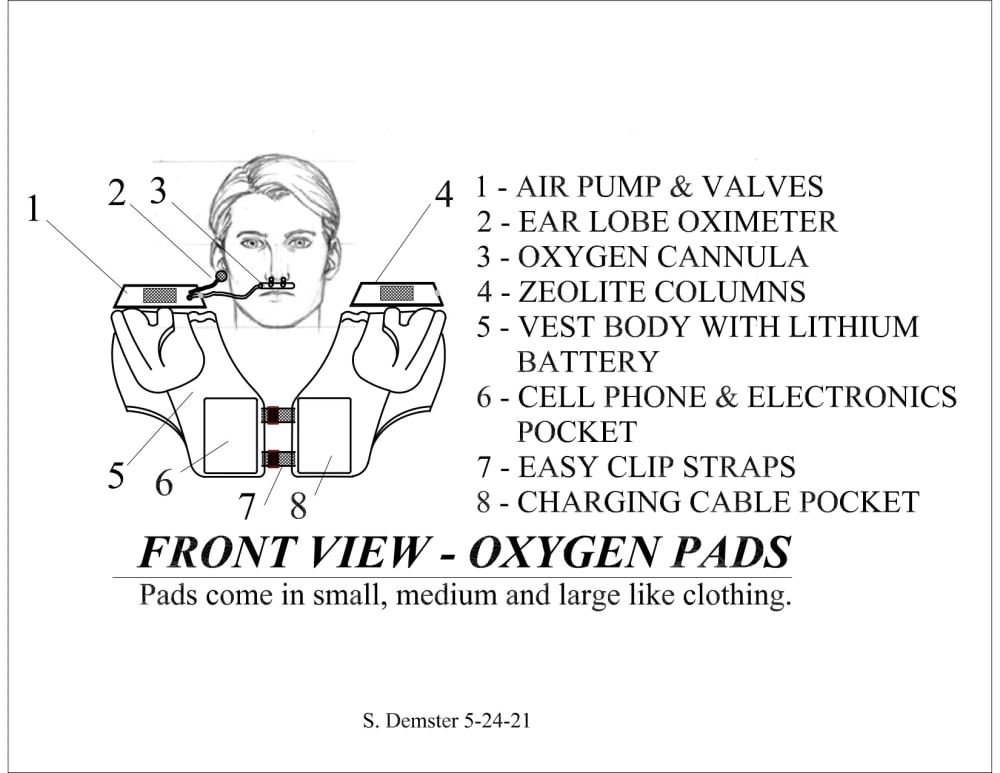The portable oxygen concentrator is a great technology, blessing thousands with the opportunity to remain active and functional with their breathing disease. However, as a user requiring 24/7 oxygen, I can attest that these devices are far from perfect. I have tripped on the oxygen cannula tubing and broken my shoulder. The concentrator is heavy to carry and cumbersome in the car. Tethering me down causes my simple chores to become almost impossible. The charging cords are never around when needed. The limited controls are tough to see and use. One day I saw a parrot sitting on a woman’s shoulder and I became inspired to create a wearable oxygen concentrator that restores the freedom, function and convenience this device had taken from me.
As shown in the sketch, these “OXYGEN PADS” resemble a common set of football shoulder pads. The flexible lithium polymer battery is contained within a soft cloth layer that goes over your shoulders to provide firm support. Weighing in at around 6 pounds, the basic oxygen concentrator is relatively light weight, and soon is easy to ignore while setting on your shoulders. On one shoulder you have the pump and valve mechanism with silencing materials housed in a small plastic case. On the other shoulder you have the zeolite columns and air intake/exhaust. Around the back small tubing routed within the cloth support material connects the two pads together.
The two pads are attached in front by common easy clips and straps that, with another small strap under each arm, anchor the OXYGEN PADS in place. Optionally, these straps can be used with a motion sensor to monitor respiration, and the Pad laying over the heart can include a sensor to monitor heart rate. If desired, the oxygen delivery can be controlled in a closed loop manner by using an oximeter ear lobe sensor to measure saturated oxygen levels. One pad has a pocket in front to hold the charging cabling (which need not be disconnected from the device where it can be misplaced.)
The other pad contains a cell phone pocket that turns an off-the-shelf cell phone into your medical monitoring system. The cell phone plugs in to use the bigger battery in the pads and to connect to the integrated sensors. There is now a full set of vitals available and the Pads can detect a fall too by the addition of a small accelerometer. The patient can use their voice to control the system and call for help if needed.
With the OXYGEN PADS the patient walks around, sits, and can do most normal activities without any interference from the cabling, cannula or bulk of an oxygen concentrator. Having built one, I can attest to the freedom it restores to your life to have your arms and legs free again. The system soon becomes a part of you that can be ignored. The shoulder position of this wearable technology and additional functions are an ideal solution for making life better.
Like this entry?
-
About the Entrant
- Name:Stanley Demster
- Type of entry:individual
- Software used for this entry:Turbocad 2021
- Patent status:none

